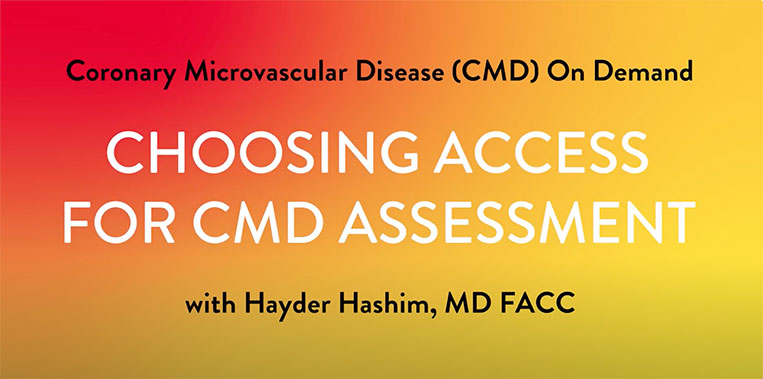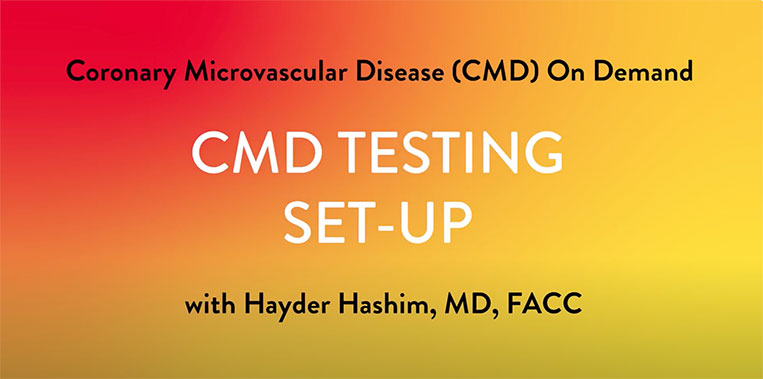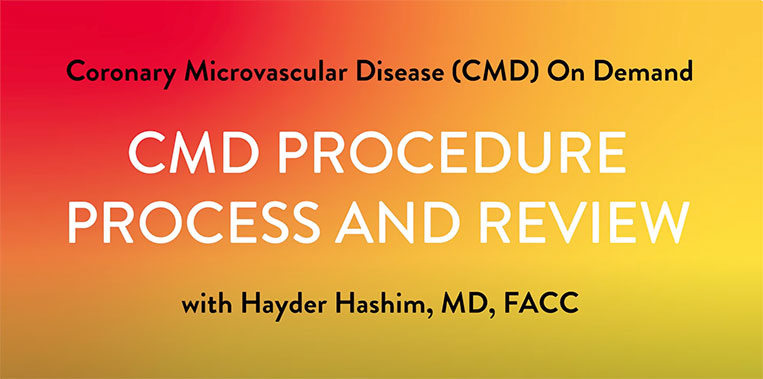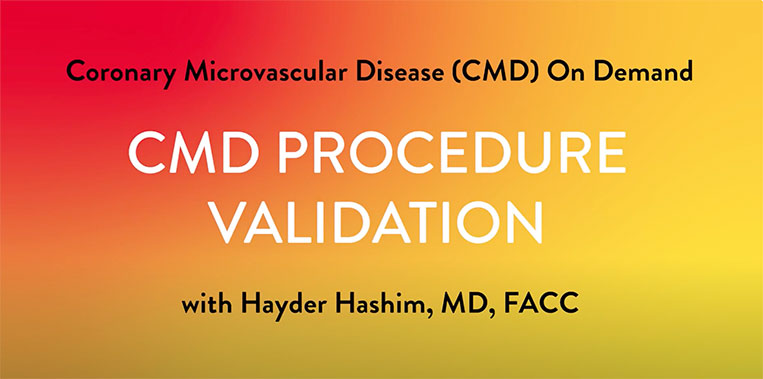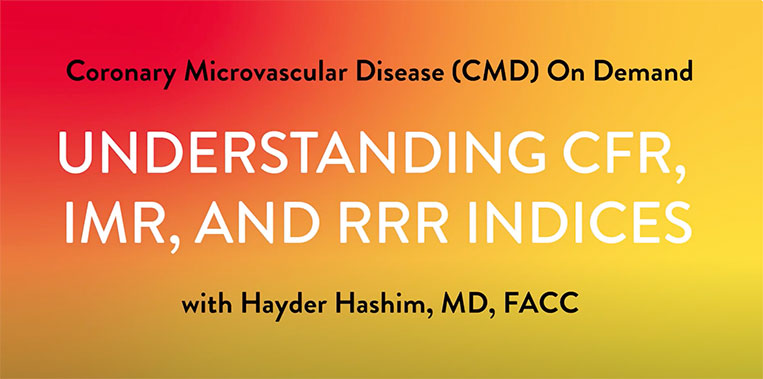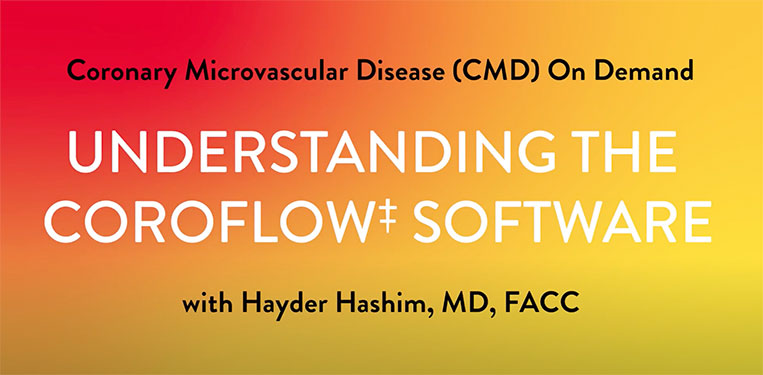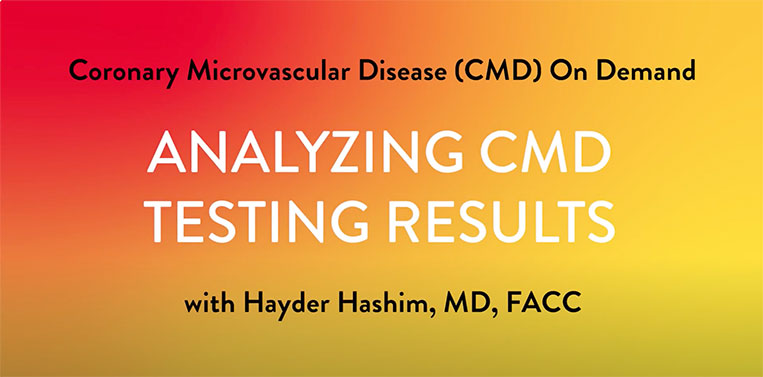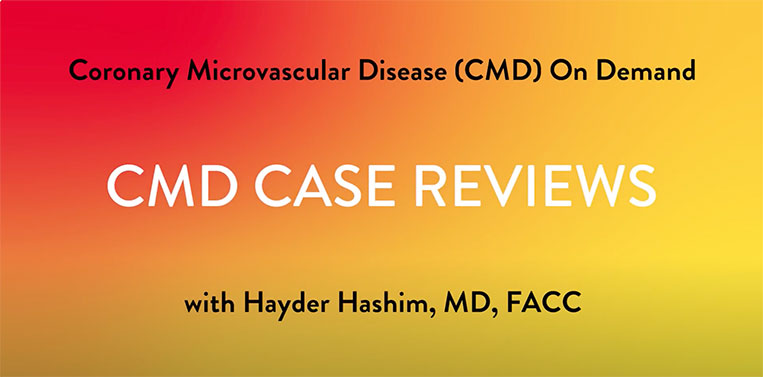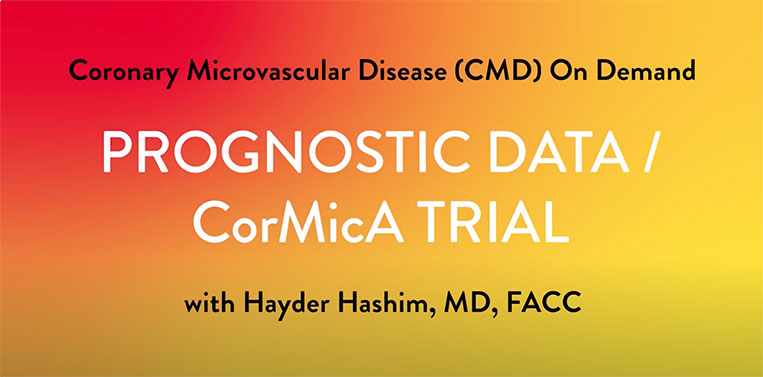How-to CMD Masterclass
Expert-Led Video Series with Dr. Hayder Hashim
This series covers Coronary Microvascular Dysfunction (CMD) testing, diagnosis, troubleshooting, and treatment, and highlights how it supports full physiological assessments to provide clear diagnosis for patients with persistent angina.
Hayder Hashim, MD
Assistant Professor, Division of Cardiology
Georgetown University
Interventional Cardiologist - Medstar Washington Hospital Center

Learn how to include CMD testing in your standard practice. Contact a representative today.
Part 1: Access
Learn about different access options guiding catheter choices, catheter hygiene, and pre-CATH medication before performing CMD testing.
Part 2: CMD Testing Set-Up
Learn the steps to prepare for CMD testing, perform a reliable zero, equalize, and measure Resting Full-cycle Ratio (RFR).
Part 3: Procedure Process and Review
Learn how to set up PressureWire™ X Guidewire and CoroFlow‡ Cardiovascular System to take measurements, and analyze results.
- Resting Full-cycle Ratio (RFR)
- Coronary Flow Reserve (CFR)
- Index of Microcirculatory Resistance (IMR)
- Fractional Flow Reserve (FFR)
Part 4: CMD Procedure Validation
Learn how to ensure an accurate CMD assessment and how to validate the results, including troubleshooting and safety tips.
Part 5: CFR, IMR, and RRR Indices
Gain a deeper understanding of each index, how they are calculated and what are the normal values.
- Coronary Flow Reserve (CFR) and Index of Microcirculatory Resistance (IMR)
- Resistive Reserve Ratio (RRR)
- CFR (Norm) & IMR (Corrected)
Part 6: Understanding the Software
Learn how to check results when the CMD testing is done, how to identify borderline results, and what are some of the check points for an adequate CMD study.
Part 7: Analyzing Testing Results
Learn how to interpret CMD test measurements and values, and how to use them to help treat the patient.
- How to decide between IMR & CFR results?
- What are the first two values to look at?
- What indices to look for in a case of myocardial bridging?
Part 8: CMD Case Reviews
Learn how to validate and interpret the readings including FFR, CFR, IMR, RRR, and Pd/Pa through these case-based reviews.
Part 9: Prognostic Data / CorMicA Trial
Learn about the prognostic CFR data and CorMicA Trial.
- What does a low CFR indicate?
- Why does a low CFR occur?
- How does IMR data link to prognosis?
Part 10: CMD Treatment
Learn how to approach CMD diagnosis and treatment.
MAT-2410740 v1.0
Important Safety Information
PressureWire™ X Guidewire

Indications: The PressureWire™ X Guidewire is indicated to direct a catheter through a blood vessel and to measure physiological parameters in the heart and in the coronary and peripheral blood vessels. Physiological parameters include blood pressure. The PressureWire™ X Guidewire can also measure blood temperature.
Contraindications: This guidewire is contraindicated for use in the cerebral vasculature.
Warnings:
- No modification of this device is allowed.
- The PressureWire™ X Guidewire is supplied sterile. Discard the guidewire if the pouch is opened or damaged, compromising the sterile barrier. The guidewire is designed for single use only and shall not be reused or resterilized. Adverse effects of using a non-sterile or resterilized guidewire may include, but are not limited to:
- Local and/or systemic infection
- Mechanical damage
- Inaccurate readings
- Observe all guidewire movements. Whenever the guidewire is moved or torqued, the tip movement should be examined under fluoroscopy. Never push, withdraw, or torque the guidewire if it meets resistance or without observing corresponding movement of the tip, otherwise vessel/ventricle trauma may occur.
- Torquing or excessive manipulation of the guidewire in a sharp bend, against resistance, or repeated attempts to cross a total vessel occlusion may:
- Cause dissection or perforation of blood vessels
- Cause vessel spasm
- Damage and/or fracture the guidewire
- When introducing the guidewire, flush the catheter and administer anticoagulation as for a standard catheterization procedure or clotting may occur.
- Do not use the guidewire in the ventricles if the patient has a prosthetic mechanical or biological valve. It may result in damage to both the prosthesis and the guidewire, which may cause injury or death.
- Use of the PressureWire™ X Guidewire in conjunction with interventional devices with a short rapid exchange may result in a folded or fractured guidewire.
- High frequency surgical devices must not be used on a patient at the same time as the guidewire.
Precautions:
- The PressureWire™ X Guidewire is a delicate instrument and should be handled carefully.
- Make sure that the transmitter is kept dry to ensure accurate pressure and/or temperature readings. Inaccurate readings may necessitate device replacement.
- Do not use the guidewire in conjunction with atherectomy catheters. It may damage the guidewire.
- Do not withdraw or manipulate the guidewire in a sharp-edged object. It may result in abrasion of the guidewire coating.
- Factors that may affect the accuracy of the diagnostic information include, but are not limited to:
- Improper placement of the aortic pressure sensor.
- Failure to achieve maximum coronary and myocardial hyperemia in FFR procedures.
- Blood flow affected by the position of interventional devices, such as balloon catheters.
- Guidewire readings may be affected by defibrillation. Rezero the guidewire after defibrillation use.
- Do not measure pressure when the guidewire sensor element is in a sharp bend or in contact with atrial or ventricular walls. It might result in pressure artifacts.
- Do not use the PressureWire™ X Guidewire together with another guidewire, for so called jailed wire technique, due to difficulty in guidewire withdrawal and possible guidewire entrapment.
- Store at room temperature (15°C – 25°C) in a dry and dark place.
Potential Adverse Events: Potential complications which may be encountered during all catheterization procedures include, but are not limited to: vessel dissection or occlusion, perforation, embolus, spasm, local and/or systemic infection, pneumothorax, congestive heart failure, myocardial infarction, hypotension, chest pain, renal insufficiency, serious arrhythmias, or death.
In addition, this device has a coating containing Polyethylene Glycol (PEG); potential allergic reactions (anaphylaxis) may occur during the interventional procedure if the patient is allergic to PEG.
MAT-2103599 v2.0

